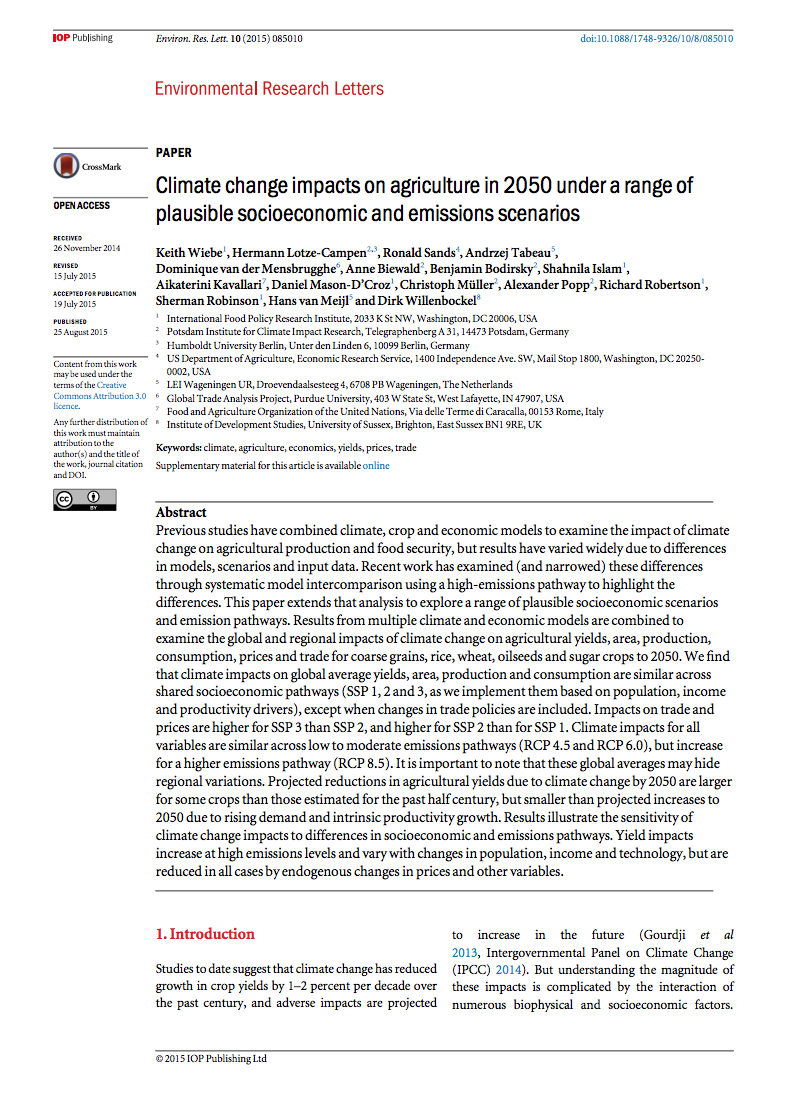Resource information
Previous studies have combined climate, crop and economic models to examine the impact of climate change on agricultural production and food security, but results have varied widely due to differences in models, scenarios and input data. Recent work has examined (and narrowed) these differences through systematic model intercomparison using a high-emissions pathway to highlight the differences. This paper extends that analysis to explore a range of plausible socioeconomic scenarios and emission pathways. Results from multiple climate and economic models are combined to examine the global and regional impacts of climate change on agricultural yields, area, production, consumption, prices and trade for coarse grains, rice, wheat, oilseeds and sugar crops to 2050. We find that climate impacts on global average yields, area, production and consumption are similar across shared socioeconomic pathways (SSP 1, 2 and 3, as we implement them based on population, income and productivity drivers), except when changes in trade policies are included. Impacts on trade and prices are higher for SSP 3 than SSP 2, and higher for SSP 2 than for SSP 1. Climate impacts for all variables are similar across low to moderate emissions pathways (RCP 4.5 and RCP 6.0), but increase for a higher emissions pathway (RCP 8.5). It is important to note that these global averages may hide regional variations. Projected reductions in agricultural yields due to climate change by 2050 are larger for some crops than those estimated for the past half century, but smaller than projected increases to 2050 due to rising demand and intrinsic productivity growth. Results illustrate the sensitivity of climate change impacts to differences in socioeconomic and emissions pathways. Yield impacts increase at high emissions levels and vary with changes in population, income and technology, but are reduced in all cases by endogenous changes in prices and other variables.


